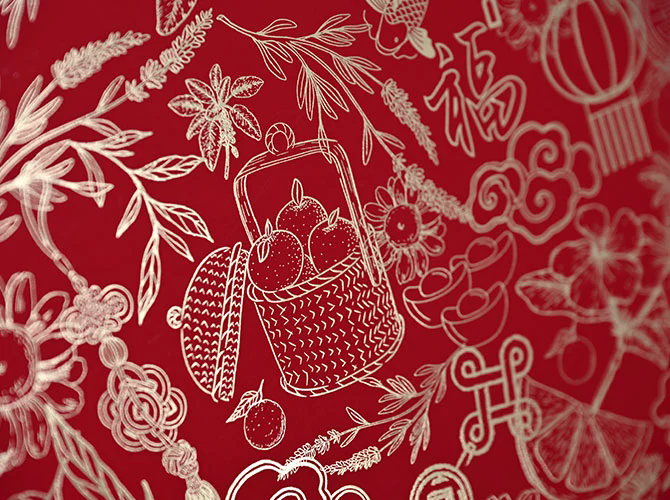Traditional Foils: The Timeless Material for Crafts and Packaging
2025-04-01
Foil has been used for thousands of years across various cultures for decorative, protective, and practical purposes. While modern aluminum foil often takes the spotlight today, traditional foils have a rich history and are still favored in certain industries, particularly for crafts, packaging, and decorative art. Made from thin sheets of metal, traditional foils have been an essential material in a range of applications, from fine art to food packaging. This blog will explore the enduring appeal of traditional foils and their uses, especially in creative and practical settings.
What Are Traditional Foils?
Traditional foils typically refer to metal foils made from materials such as gold, silver, or copper, which are hammered or rolled into thin sheets. These foils were historically hand-crafted and used for a wide variety of purposes, ranging from religious artifacts and decorative art to food preservation and packaging. The durability, malleability, and reflective qualities of metal foils made them incredibly valuable for different applications.
Over time, the manufacturing of foils has evolved, but the traditional methods of applying thin metal sheets onto surfaces for decoration or protection still hold a special place in the world of crafts and art.
The Historical Significance of Traditional Foils
Throughout history, foils made of precious metals like gold foil were used extensively in religious manuscripts, artwork, and architecture. Many ancient civilizations, such as the Egyptians, Romans, and Chinese, utilized gold and silver foils in their art and ceremonial objects, showcasing their wealth, power, and reverence for the divine.
Gold leaf, for example, has been a symbol of luxury and wealth for centuries. It was used to embellish everything from ancient tombs to royal portraits and sacred texts. Gold and silver foil were applied to wood, stone, and other surfaces to create shimmering designs that were both visually striking and culturally significant.
Applications of Traditional Foils Today
While modern foil products are still popular in food packaging and industrial uses, traditional foils, particularly gold leaf and silver foil, are still widely used in crafts, art, and luxury goods. Below are some of the most common and significant uses for traditional foils:
1. Decorative Arts
Gold and silver leaf are widely used in the world of decorative arts. They can be applied to surfaces like picture frames, furniture, and sculptures to add a luxurious, shiny finish. Gilding, the process of applying metal leaf to objects, is a traditional technique still practiced today. Artisans use it to create intricate designs on everything from religious icons to high-end furniture.
2. Fine Art and Restoration
Traditional foils are essential in art restoration. When restoring old paintings, sculptures, and other artworks, conservators often need to use gold leaf or silver foil to bring back the original beauty of the piece. The shiny, reflective quality of metal leaf enhances the artwork, making it look more vibrant and authentic.
3. Packaging and Luxury Goods
Traditional foils are often found in luxury packaging for high-end products such as perfumes, chocolates, and fine wines. Gold or silver foils are frequently used to create elegant labels, logos, and accents that convey a sense of exclusivity and craftsmanship. The gleam of these metallic foils gives products a premium look, making them more desirable to consumers.
4. Crafting and DIY Projects
Traditional foils are popular in DIY crafting, where they can be used to add shimmer and shine to scrapbooks, greeting cards, home décor items, and more. Applying gold or silver leaf to objects like vases, photo frames, and canvases is a simple way to achieve a high-end look without the need for expensive materials. Whether used in wedding invitations or holiday decorations, traditional foils add elegance to any creative project.
5. Culinary Arts
Gold leaf is also used in the culinary world to create edible artwork. Chefs use gold foil to decorate desserts, cakes, and chocolates, enhancing the presentation of fine dining. While gold foil does not add flavor, its presence elevates the visual appeal of food, making it a favorite for luxury restaurants and special events.
Why Traditional Foils Are Still Popular
Despite the rise of modern materials like plastic and synthetic coatings, traditional foils remain a popular choice for various applications. Here’s why:
1. Aesthetic Appeal
The reflective quality of gold, silver, and copper foils adds a unique and timeless beauty that is hard to replicate with other materials. Whether it’s the soft gleam of gold leaf or the cool shine of silver, traditional foils have an unmatched ability to catch light and captivate the eye.
2. Cultural Significance
Traditional foils, especially those made from precious metals, hold deep cultural and historical significance. Many people continue to use them in art, restoration, and luxury goods as a way to honor ancient techniques and showcase craftsmanship.
3. Durability
Despite their thinness, traditional foils are incredibly durable and resistant to wear, which makes them ideal for use in fine art, architecture, and luxury packaging. Gold and silver leaf, for instance, are not prone to tarnishing or fading over time.
4. Eco-Friendly Option
Unlike some modern materials that may contribute to environmental pollution, traditional foils made from metals like gold and silver are often more sustainable and recyclable. For artisans and manufacturers focused on eco-conscious practices, traditional foils are an attractive alternative to synthetic materials.
Conclusion
Traditional foils, with their rich history and versatile applications, continue to be an essential material for artists, craftsmen, and manufacturers around the world. Whether used in gilding, fine art restoration, luxury packaging, or crafts, these metallic foils bring a touch of elegance and timeless beauty to any project. As technology advances, the craft of working with gold, silver, and copper foils remains a cherished tradition that blends history, artistry, and luxury. Whether in the hands of skilled artisans or as part of modern-day packaging, traditional foils will likely remain an integral part of our creative and practical endeavors for years to come.



